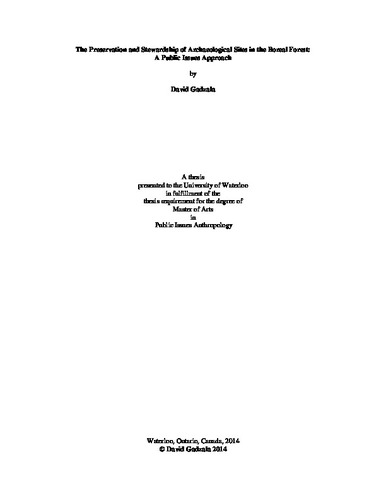| dc.description.abstract | Archaeological sites in the boreal forest are facing threats due to urban development, resource exploitation, vandalism, and infrastructure development, among others. In the context of archaeological site preservation as a public issue, I examine the perspectives of various publics towards the preservation and stewardship of archaeological sites in the boreal forest. Through a series of interviews, I examine the opinions of three publics involved in the archaeological process in Ontario: developers, First Nations, and archaeologists. I outline the participants’ opinions on the meaning and goals of preservation, the preservation of non-physical aspects of sites, such as oral history and site spirituality, preservation methods, site ownership and access, land use and development, involvement in the archaeological process, and funding. I also identify common themes which presented themselves throughout the interview process, such as the importance of education; the necessity for communication, collaboration, and cooperation; the problem of artifact curation; the perceived lack of genuine government involvement; and the publication of cultural resource management (CRM) archaeology’s “grey literature”.
Finally, I present suggestions on the preservation of archaeological sites which take into account the participants’ perspectives uncovered during the interview process. I conclude that preserving archaeological sites can be done using three techniques: education; communication, collaboration, and compromise; and using one of three general methods to preserve sites and artifacts. Education can be used to create public issues, teach people about the importance of archaeology and archaeological sites, and teach the involved publics about the goals and methods of CRM archaeology in Ontario. Encouraging communication, collaboration, and compromise between the interested publics includes the perspectives of formerly neglected parties, builds relationships between publics, and creates newly vested interests in site preservation. Three methods to preserve archaeological sites include site stabilization and monitoring, allowing sites
to decay naturally, and excavating sites and curating the artifacts and oral histories for the long-term. | en |

